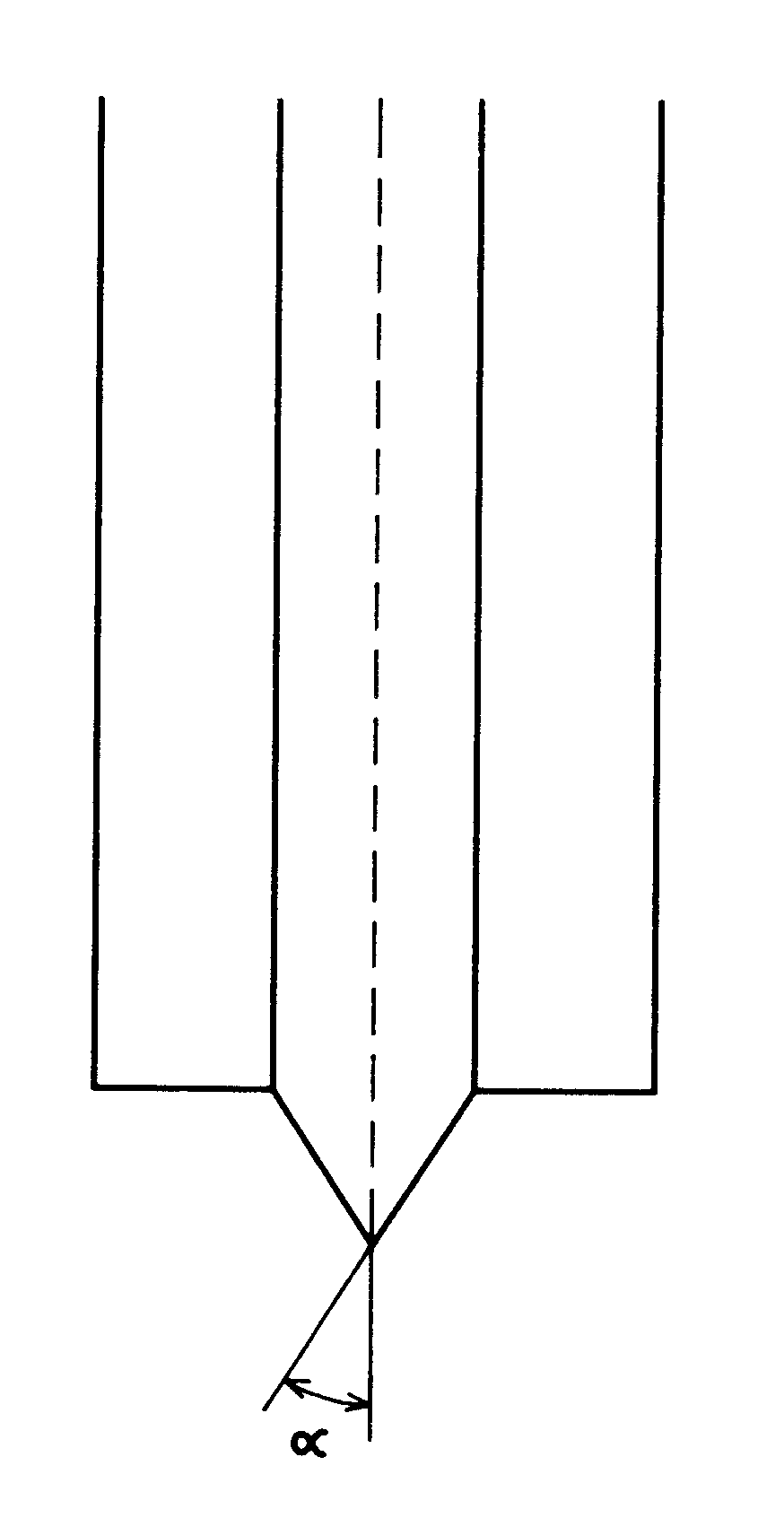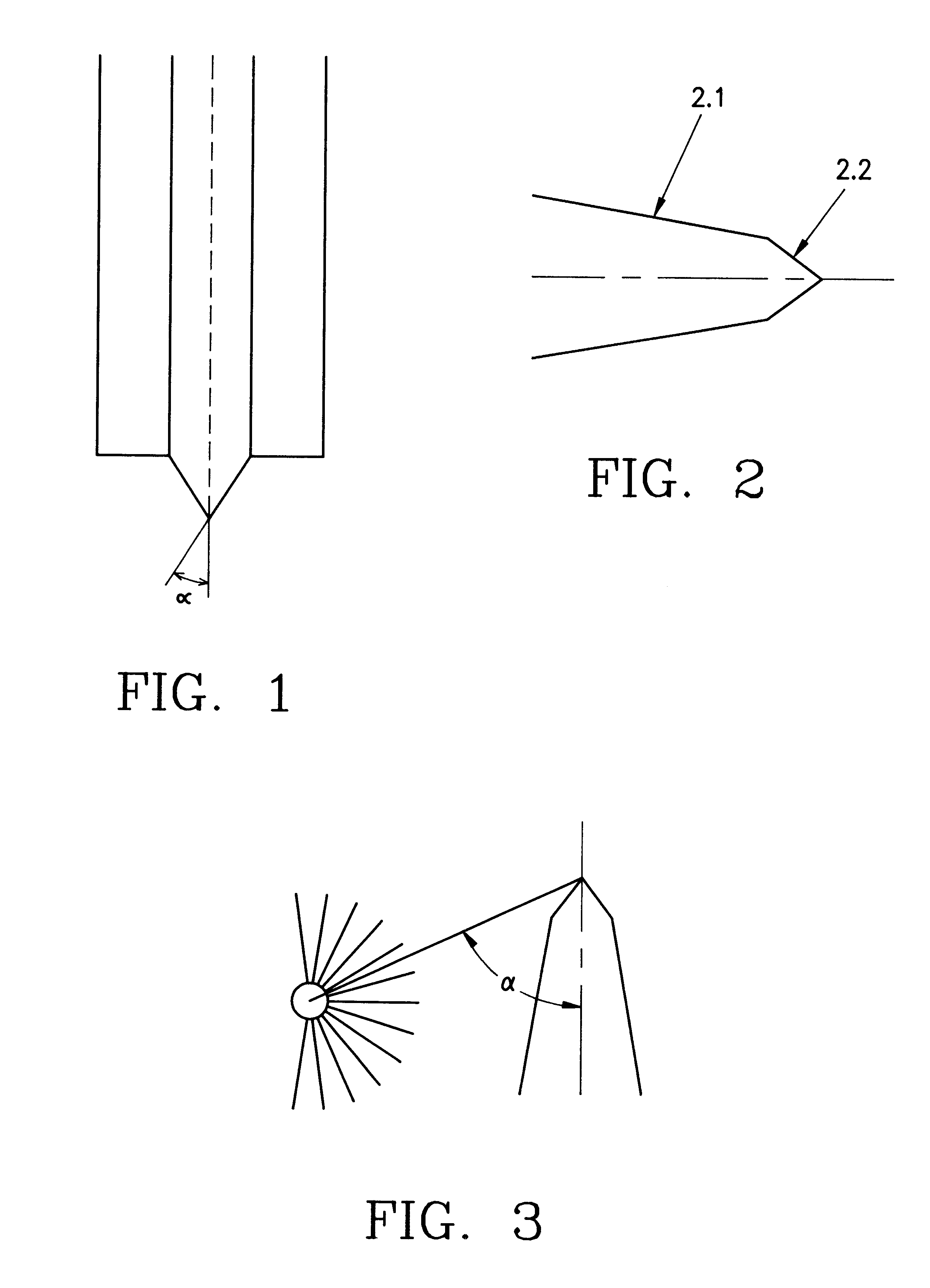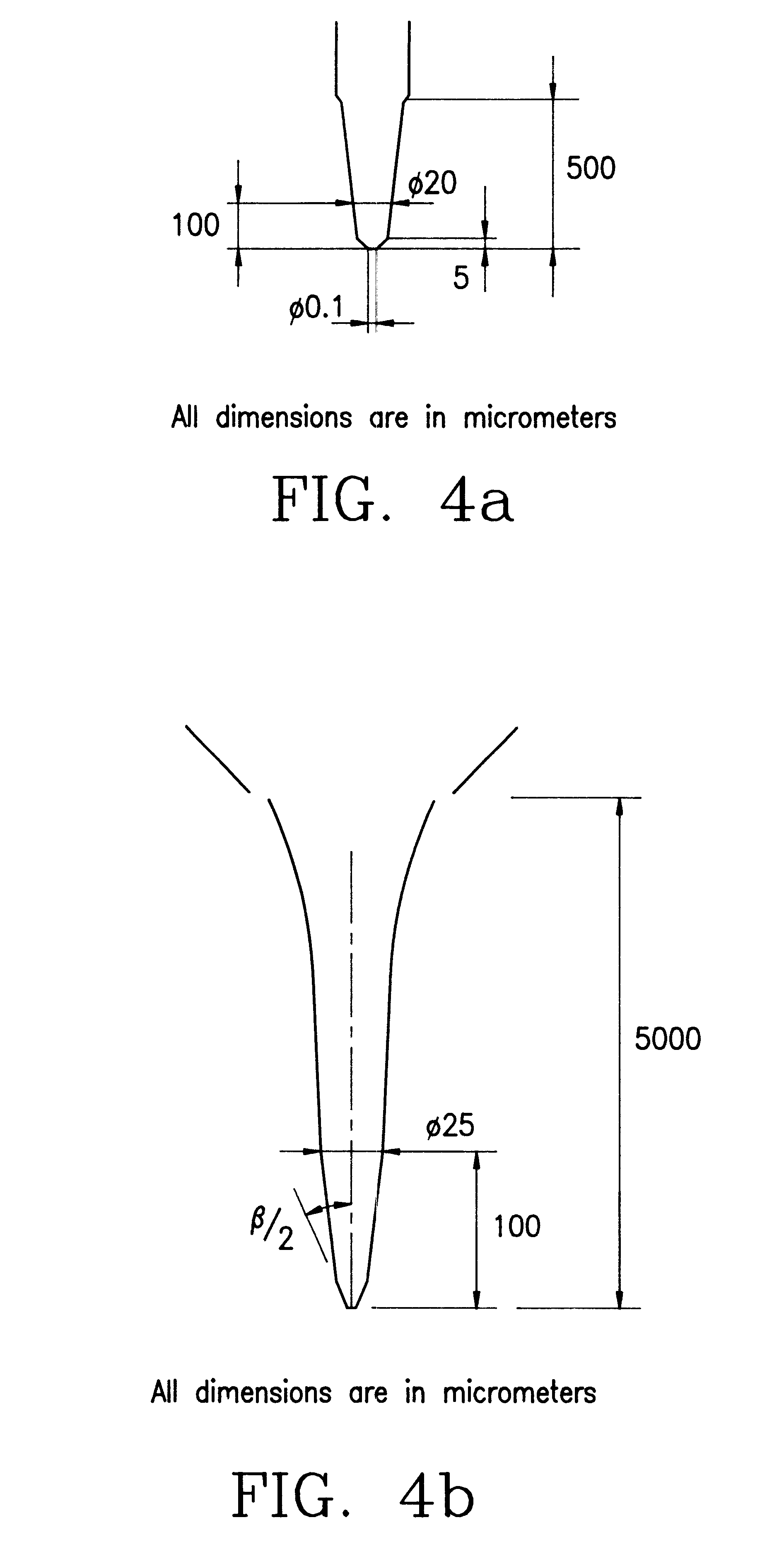Glass structures for nanodelivery and nanosensing
a nano-display and nano-sensing technology, applied in the direction of glass shaping apparatus, material strength using single impulsive force, ion implantation coating, etc., can solve the problems of difficult to coat successfully, damage to surfaces, and significant evanescent losses, and achieve good atomic force sensing capabilities and high transmission sub-wavelength optical apertures.
- Summary
- Abstract
- Description
- Claims
- Application Information
AI Technical Summary
Benefits of technology
Problems solved by technology
Method used
Image
Examples
Embodiment Construction
With pulling technology there are many parameters that can be adjusted to obtain the optimal profile. These are: 1. heat or temperature, 2. the geometric region that is heated, called the filament, 3. the velocity of the pulling that is measured as the glass softens and begins to separate under a constant load and this velocity is determined by the time of heating, 4. the delay between the start of the pulling and turning off the heating element and 5. the tension of the pulling. These can all be microprocessor controlled to develop a geometry in which the glass is first tapered to a dimensionality that is above the cut-off for the propagation of electromagnetic radiation in a metallic waveguide (FIG. 2.1 ) and is then cooled before a second tapering cycle is entered in which a cone angle between 30-40.degree. (FIG. 2.2 ) is achieved by multiple pulling cycles. This geometry is shown in FIG. 2. The number of these later cycles depends on the final outer diameter of the tip. In addit...
PUM
| Property | Measurement | Unit |
|---|---|---|
| Angle | aaaaa | aaaaa |
| Angle | aaaaa | aaaaa |
| Frequency | aaaaa | aaaaa |
Abstract
Description
Claims
Application Information
 Login to View More
Login to View More - R&D
- Intellectual Property
- Life Sciences
- Materials
- Tech Scout
- Unparalleled Data Quality
- Higher Quality Content
- 60% Fewer Hallucinations
Browse by: Latest US Patents, China's latest patents, Technical Efficacy Thesaurus, Application Domain, Technology Topic, Popular Technical Reports.
© 2025 PatSnap. All rights reserved.Legal|Privacy policy|Modern Slavery Act Transparency Statement|Sitemap|About US| Contact US: help@patsnap.com



